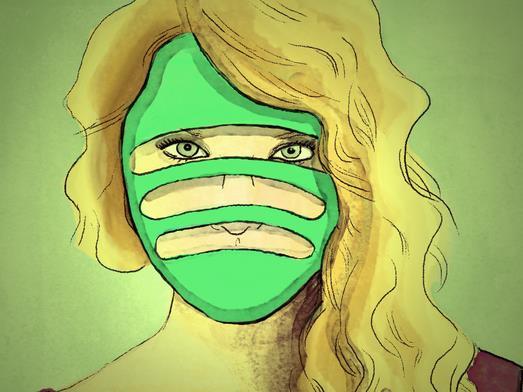Image via Pando.com
Those who’ve read my contributions to ArtsHub before will know I’ve always been pretty keen on music streaming. Over the past four or five years, I’ve embraced the concept of ‘free music’ for all sides of the equation. As a music fan, I love having all the music in the world at my fingertips, whilst as an artist I appreciate the fact that my music can be accessed, discovered and shared easily. I also like the idea that eventually, through either subscription or advertising revenue, artists and writers are eventually compensated for the use of their songs. Taylor Swift, on the other hands, holds a different point of view.
‘I think there should be an inherent value placed on art,’ said Swift last year in an interview with Time Magazine, before going on to explain that she had removed her music from Spotify, arguably the biggest and most influential of all the streaming services. Now whilst I can’t exactly claim to be a big Taylor Swift fan, her highly publicised comments and actions prompted me to re-examine my position on music streaming.
As a recording artist, I figured that a good place to start might be the recent royalty statement I received from the company that distributes my band’s recent album (both physical CDs and digital copies). Whilst my statement doesn’t differentiate between some of the different streaming services (Grooveshark, RDO etc) it does tell me how much we earned from Spotify itself versus physical CD sales and digital downloads (iTunes etc). Whilst I’m not going to declare our exact sales figures in a public forum, I can report to you my findings in percentage terms (my Dad’s a math teacher, he helped me with this).
According to the recent royalty statement, digital downloads represented a whopping 80.86% of our total royalty income for the month in question, whilst CD sales represented just under 19%. The smallest figure on the statement belonged to Spotify, which came in at 0.19% of our monthly royalty income!
Now as you can imagine, the actual dollars and cents figure for the Spotify payment was pretty small, and no other streaming income was shown on the report at all (mostly because the other streaming services, which all get bundled together on my statements, only report to the distributor a couple of times a year). Of course, one month is a very small accounting period to examine, so I went back through my statements and compared notes for the other twelve months that had gone by since the album was first released. The results of this further investigation backed up my initial findings. Whilst physical CDs and Downloads varied from month to month (physical copies dominated in the early months after the album’s release before downloads gradually took over), between them they always accounted for between 98% and 99.8% of the total income for the month. Other income sources popped up occasionally (including the bundled streaming services, which peaked at about .30% in one particular month), but Spotify remained at the very bottom on each and every statement – hovering between .03% and .25%.
Now of course, even .03% of Taylor Swift’s monthly income is enough to live on for a year for most of us, but even from my own small investigation I can kind of get Taylor’s frustration. The main worry, of course, is that those accessing music through Spotify might never actually purchase the song or album. After all, Spotify use is increasing (Swift’s actions seemed to spark an ironic upsurge in Spotify subscriptions late last year), as is streaming overall (according to Nielson, 164 billion songs were streamed in 2014 compared to 106 billion the year before). It seems inevitable that music streaming will become the first choice for listeners over the next couple of years, and if this is not reflected proportionally in artists’ royalties then our business is in (even more) trouble.
So, with this in mind, should artists follow Taylor Swift and remove their music from the streaming services? I’m still not so sure.
You see, royalty from sales (or streaming) is only one part of the picture for those of us trying to make a living out of music – and for almost all the other parts (playing live, touring, performing at festivals, publishing, session work etc) we rely heavily on building our profile and value through exposure.
Whilst Taylor Swift may have the reputation and promotional budget to sell out world tours, most artists (even those with followings stretching into the hundreds of thousands) still need significant exposure to keep their careers afloat. Few of us would hesitate to make our music videos available on YouTube for we know that the service is a valuable promotional tool (and it is, essentially, just another streaming service like Spotify etc). It is a simple fact of the artist’s life that are lots of ‘unpaid’ (or even sometimes costly) activities that must be done to promote the music. Without radio play, magazine articles, YouTube videos and the occasional television spot, I have no doubt that my band’s own perceived ‘value’ (and therefore gig and festival fees) would be lower – streaming services are undoubtedly part of that media mix, and in a small way contribute indirectly to our income.
So if we can bring ourselves to think of Spotify and its counterparts as promotional tools, I’d advise my fellow artists to stick with them. Of course, that’s not to say that the model can’t work better. When I first wrote about streaming services for ArtsHub I saw them as the future of music listening. I still believe that to be the case, but I’m hopeful that the model will improve, in favour of the music creators, before streaming completely takes over.





